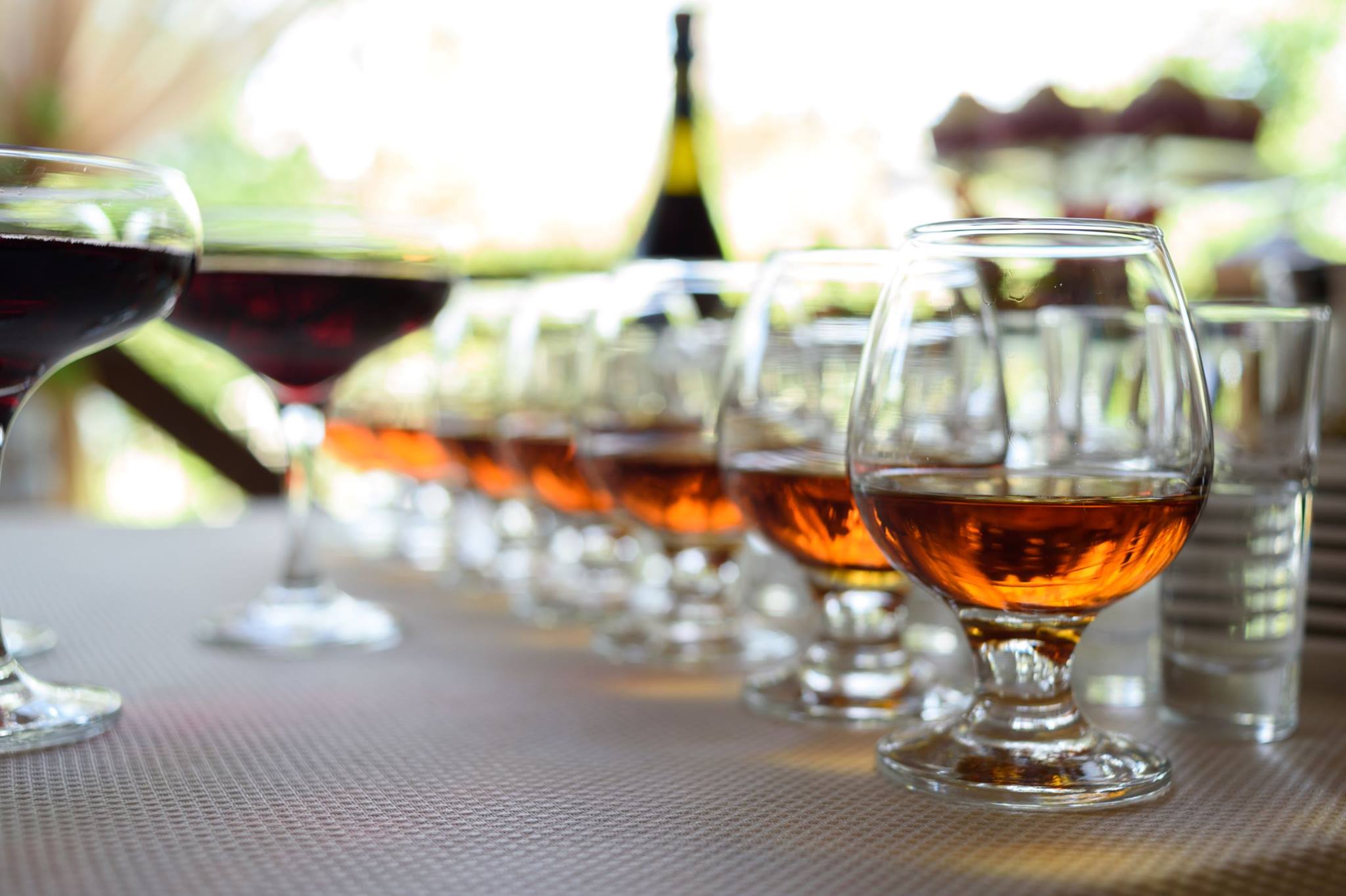
Back to School to Solve the Food and Wine Pairing Puzzle at Drexel’s Center for Hospitality
Story, photos by Dana J. Prophet
Most people choose a wine that’s their favorite, suggested by a server or sommelier, or whatever is on sale. What most amateur oenophiles don’t know is that the meal’s components (sauce, protein, sweetness, and/or acidity) will affect the taste of the wine. Hannah Bellemare (formerly Dalälva) teaches lovers of wine the intrinsic properties of how one wine should be enjoyed with what type of food. Hannah is a Gastro-Sommelier who currently runs Dalälva Wine Tastings & Consulting in Philadelphia.
More than a flow chart of what works and what doesn’t, students learn that where a wine comes from makes a difference as much as how it vinified. Although you will not leave the six-week course a master sommelier, you will gain a greater knowledge of wine and an eagerness to test your new found wisdom.
Our instructor Hannah has a Bachelor’s Degree in Gastronomy (Culinary Science) from the University of Umeå in Northern Sweden where she was also the student body president of Gastronomy & Hotel Management Division of the university, and sat on the university board. She took her studies seriously and graduated with honors.
She continued her knowledge with an Advanced Sommeliers diploma from the Swedish Restaurant academy in Stockholm (WSET Advanced Sommelier Certification and Swedish Sommelier Certification) and again graduated with honors. As a student attending this 6-week class, you are on a fascinating course to learn the basics of pairing wine.
Pennsylvania Liquor Control Board monitors what citizens have access to. This is the reason that walking into a wine and spirit store can be daunting. The Fine Wine & Good Spirits website does however give suggestions on what to buy for many occasions, but even with a smart phone at the ready, combining wine with a meal can still be a matter of personal taste.
As someone who loves wine, I usually stick to my favorites no matter the moment whether it’s for a night in with my cats, dining at a BYOB, or presenting a gift to a dinner party. What did not occur to me is the different levels and combinations of basal flavors and sensory breakdowns.
In the First Week of class, Hannah explained the specifics to understand wine. We were introduced to vinification and learned how to taste wine.
Depending on where in the world the wine is made depends on the flavor of the wine. And other factors are equated such as soil and rainfall. Hannah encourage us to think for ourselves and trust our brains, senses, and instincts of what we determined the aroma of the wine (also know as the nose) and palate to be. We then can discover the nuances of each wine.


During Week Two, we moved on to combining basal flavors – sweet, sour, salty, bitter, and umami. “In all meals you will have a combination of these basal flavors. For example acid is the backbone in wine, but the perception of this acidity can be altered by what you are eating,” explained Hannah. Specifically how acid, fat, and spices in food can change the wine’s wine.
Also, Hannah discussed the sensory factors Fattiness and Spice heat. With the tools learned this week, I can dazzle my friends with a lovely bottle of Spa Valley Sauvignon Blanc for our next night out at Tiffin.


Week Three, we learn how to pair wine with sauces advancing our education in flavor combination. Armed with a lovely brioche roll and a selection of sauces – barbeque, pesto, white wine vinaigrette, Asian dipping sauce, marinara, and alfredo, we challenged four of our five senses to pair it with a selection of wines.




Now I’m biased in my excitement for Week Four – Pairing Dessert Wines and Desserts. Often at fine dining restaurants, I see a selection of dessert wines along the featured desserts for the night. I always assumed a dessert wine would be sweet and I could not imagine why one would choose a sweet beverage with a dessert when the seemingly perfect match is a cup of coffee or tea.
As one lives, one learns.
Week One, Hannah dispelled previous thoughts of wine and what food goes best with it. If you took a sip of sweet sherry, took a bite of sweet pie, and then took another sip, you would instantly notice the sherry is not longer as sweet as you original thought. As in the previous weeks, different wines go best with different desserts. There’s no one size fits all here.


You would be hard pressed to find someone not excited about Week Five – Wine and Cheese. If you are not a sweets lover, perhaps to end the meal you may want to opt for the cheese platter. Since these wines tried during Week Five, you can share it with the person you are dining with if they choose a dessert for the final course.




The bittersweet final class is Week Six – Fine Dining and Wine. Our final class using what we learned by getting into the kitchen. Hannah chose the menu using her scrumptious food and wine recipes found on her website.
















After taking the six week course, I know have the confidence to try new wines with any cuisine. No matter if you’re planning a night in with pizza and Netflix, attending a fancy dinner party, or a looking through a wine list in a Michelin-starred restaurant, you will gain all the tools you need to appreciate the right wine with your meal.
Hannah offers wine classes to enthusiasts of all levels. Get ready learn about the world of wine and lose your apprehension to try something new.
If interested in learning about food and wine pairing as seen in this class please contact dalalvawine@gmail.com or the social media links found below:
Hannah Bellemare – Gastro-Sommelier
Website: Dalälva Vinprovningar
Facebook: Dalälva Wine Tastings
Instagram: @DalälvaWine
Contact Drexel to inquire about additional community education courses



